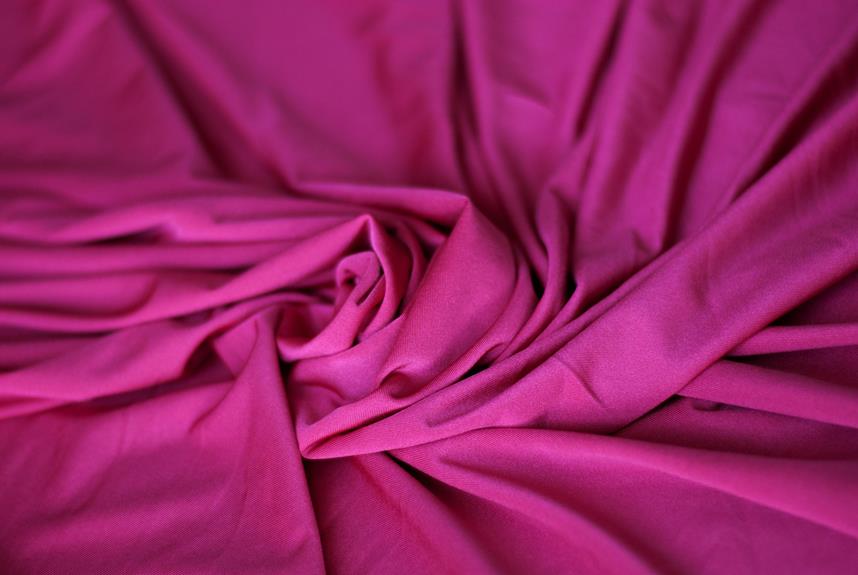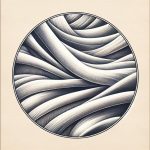When you're choosing between voile and poplin, you might find yourself torn between their unique qualities. Voile, with its lightweight and airy feel, is perfect for those summer garments that need breathability, while poplin offers a more structured and polished option for everyday wear. Each fabric has its own set of benefits and ideal uses, but understanding the nuances can make all the difference in your fashion choices. So, what factors should you consider when deciding which fabric fits your needs best?
Table of Contents
Overview of Voile
Voile is a lightweight, semi-sheer fabric that offers a delicate drape, making it perfect for flowy garments and airy home textiles. You'll appreciate how it gently cascades, giving any outfit a soft, romantic touch.
Typically made from cotton or a cotton blend, voile is breathable, making it ideal for warm weather clothing. You can easily wear it as a summer dress, blouse, or even a lightweight scarf.
In addition to its clothing uses, voile works wonderfully for curtains and other home decor items. The fabric allows natural light to filter through while maintaining a level of privacy. If you're looking to create a breezy atmosphere in a room, voile curtains can be an excellent choice.
Maintenance is straightforward, as voile can usually be machine washed on a gentle cycle. Just remember to air dry it to preserve its delicate texture.
With its soft feel and versatile applications, voile stands out in the fabric world. Whether you're sewing or shopping, knowing how to choose and care for voile will help you make the most of this charming fabric.
Overview of Poplin
Poplin is a versatile fabric known for its smooth texture and durability.
You'll find it commonly used in clothing, home textiles, and more, making it a favorite for various applications.
To keep your poplin items looking their best, understanding its care and maintenance is essential.
Fabric Composition and Properties
This versatile fabric is known for its smooth texture and crisp finish, making it a popular choice for both clothing and home textiles.
Poplin is typically made from a blend of cotton and polyester, though you can also find it in pure cotton or silk variations. This composition gives poplin its signature strength and durability, ensuring it withstands daily wear while maintaining its shape.
The fabric's tight weave contributes to its lightweight feel, which is perfect for warm weather. You'll appreciate how breathable it is, allowing air to circulate easily, keeping you comfortable throughout the day.
Poplin's slight sheen enhances its visual appeal, making it suitable for both casual and formal occasions.
In terms of care, poplin is easy to wash and dries quickly, reducing the fuss of laundry day. It's resistant to wrinkling, too, so you won't have to spend extra time ironing.
Common Uses and Applications
You'll find poplin widely used in a variety of garments and home textiles, thanks to its versatile properties and appealing appearance. This fabric's smooth texture and crisp finish make it a popular choice for shirts, blouses, and dresses. You can easily dress it up for formal occasions or wear it casually for everyday comfort.
In addition to clothing, poplin is commonly used for bed linens, tablecloths, and curtains. Its breathable quality ensures a comfortable night's sleep, while its durability allows it to withstand frequent washing and use. You'll notice that poplin's elegant drape enhances the aesthetic of home decor, making it a favored option for both modern and traditional settings.
Furthermore, poplin is often employed in children's clothing due to its softness and resistance to wrinkling. If you're looking for a fabric that combines style and practicality, poplin fits the bill perfectly.
Its ability to hold colors well means your garments will look vibrant and fresh for longer, making it a smart investment for any wardrobe or home. Whether for fashion or function, poplin proves to be a reliable and attractive choice.
Care and Maintenance Tips
How can you ensure your poplin garments and textiles stay looking fresh and vibrant for years to come? The key lies in proper care and maintenance.
First, always check the care label before washing. Most poplin fabrics can be machine washed in cold water on a gentle cycle. Avoid using bleach, as it can damage the fibers and alter the color.
When drying, opt for a low heat setting in the dryer or hang your poplin items to air dry. If you choose to iron, do it while the fabric is slightly damp, using a medium heat setting. This helps remove wrinkles without scorching the fabric.
For spot cleaning, use a mild detergent and a soft cloth. This way, you can tackle stains without subjecting the entire garment to washing.
If you notice any pilling, gently use a fabric shaver to smooth it out.
Key Characteristics
When comparing voile and poplin, you'll notice clear differences in their fabric compositions.
Each material has its own unique texture and feel that can significantly impact your choice for projects.
Understanding these key characteristics will help you make an informed decision tailored to your needs.
Fabric Composition Differences
Voile and poplin differ significantly in their fabric composition, affecting their texture, weight, and overall feel. Understanding these differences can help you make informed choices when selecting fabrics for your projects.
Voile: Typically made from 100% cotton or a cotton blend, voile is lightweight and sheer.
Poplin: Usually composed of a cotton-polyester blend, poplin offers a bit more structure and durability.
Weight: Voile is lighter, making it ideal for airy garments like summer dresses and blouses.
Breathability: Voile's loose weave promotes airflow, while poplin's tighter weave provides a more substantial feel.
Drape: Voile has a soft drape, lending itself well to flowy designs, whereas poplin holds its shape better, making it suitable for tailored clothing.
Texture and Feel
The texture and feel of voile and poplin play a crucial role in their suitability for different garments, with voile offering a light, airy sensation while poplin provides a more structured, crisp touch.
When you touch voile, you'll notice its soft, delicate texture that drapes beautifully. This makes it perfect for flowing dresses and blouses, allowing for fluid movement and breathability. It's an excellent choice for warm weather, providing comfort without clinging to the skin.
On the other hand, poplin's smooth, firm feel makes it ideal for tailored pieces. Its slightly heavier weight lends itself well to structured shirts, dresses, and pants. You'll appreciate how poplin holds its shape, giving a polished appearance that's perfect for both casual and formal occasions.
In terms of texture, voile often feels more luxurious, while poplin feels more practical. If you prefer a fabric that flows and feels light, voile's your best bet.
But if you need something more durable and structured, poplin will serve you well. Ultimately, your choice will depend on the look and feel you're aiming for in your wardrobe.
Benefits of Each Fabric
Both voile and poplin offer unique benefits that cater to different needs and preferences in fabric choice.
Voile is lightweight and airy, making it perfect for warm weather. It's often used in delicate garments, providing a soft drape that flatters your figure. Plus, its translucent quality adds a touch of elegance to your outfits.
On the other hand, poplin is known for its durability and versatility. It has a crisp finish that holds its shape well, making it ideal for structured clothing. You'll appreciate its strength, especially in everyday wear that demands longevity.
Here are some key benefits of each fabric:
- Voile: Breathable and lightweight, perfect for summer styles.
- Voile: Soft drape enhances the overall look of garments.
- Poplin: Durable and strong, ideal for everyday wear.
- Poplin: Crisp texture provides a polished appearance.
Choosing between voile and poplin really depends on the feel and look you want to achieve, so consider these benefits carefully!
Ideal Uses
When it comes to choosing fabric for your next project, understanding the ideal uses of voile and poplin can help you make the best decision for your needs.
Voile is lightweight and sheer, making it perfect for airy garments like summer dresses, blouses, and lightweight curtains. Its delicate nature adds a touch of elegance to any design, making it a favorite for layering and creating flowy silhouettes. If you're aiming for a soft, romantic look, voile is your go-to.
On the other hand, poplin is a more substantial fabric that's durable and versatile. It's ideal for shirts, dresses, and even home décor items like tablecloths and pillowcases. Poplin holds its shape well, making it great for structured garments. If you're looking for something that's easy to sew and stands up to daily wear, poplin is a strong contender.
Care and Maintenance
Caring for voile and poplin requires different approaches to keep them looking their best. Voile, with its delicate nature, needs gentle handling, while poplin is more durable and can withstand a bit more wear and tear. Here's how you can maintain both fabrics effectively:
Washing: Use cold water for both, but opt for a gentle cycle for voile. Poplin can handle a regular cycle.
Drying: Hang voile to air dry to avoid shrinkage; poplin can be tumble dried on low heat.
Ironing: Iron voile while it's slightly damp on a low setting to prevent burns. For poplin, use a medium heat setting.
Storage: Store voile in a cool, dry place, avoiding heavy folding. Poplin can be stored more casually, but still keep it away from moisture.
Stain treatment: Treat stains on voile with a mild detergent and a soft cloth. For poplin, you can use a stronger stain remover, but always test first.
Frequently Asked Questions
How Do Voile and Poplin Compare in Terms of Durability?
When you compare durability, poplin tends to be stronger and more resistant to wear and tear than voile. Voile's lightweight nature makes it less durable, so consider your usage needs before choosing between them.
Which Fabric Is More Breathable, Voile or Poplin?
When it comes to breathability, you'll find that voile is generally more breathable than poplin. Its lightweight, sheer nature allows for better air circulation, making it ideal for warmer weather and comfortable clothing choices.
Can Voile and Poplin Be Blended With Other Fabrics?
Yes, you can blend voile and poplin with other fabrics. Mixing them with cotton, silk, or polyester enhances their qualities, creating unique textures and improved durability. Experimenting with blends can lead to exciting new fabric possibilities!
What Are the Environmental Impacts of Voile Vs. Poplin?
When you consider the environmental impacts, both fabrics have different footprints. Voile, often made from natural fibers, can be more sustainable, while poplin, typically cotton or synthetic blends, may involve more resource-intensive production processes.
Is One Fabric More Affordable Than the Other?
When considering affordability, you'll find that poplin is generally more budget-friendly than voile. However, prices can vary based on quality and brand, so it's smart to compare options before making a decision.
- How Does Ring Spun Cotton Affect Garment Fit and Shape Retention? - August 13, 2024
- What Are the Challenges in Producing Ring Spun Cotton? - August 13, 2024
- Is Ring Spun Cotton Suitable for Plus-Size Clothing? - August 13, 2024







